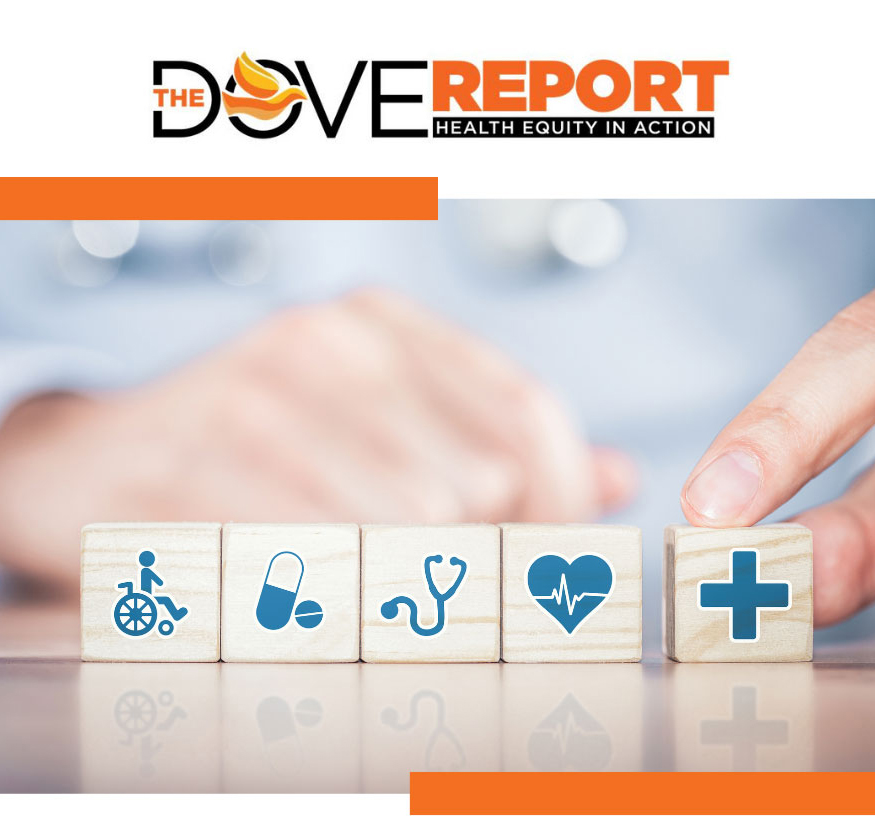An HCDI Healthy People 2030 Spotlight: The Importance of Health Insurance Coverage
One of the leading health objectives of the Office of Disease Prevention and Health Promotion’s (ODPHP) Healthy People 2030 is to increase health insurance coverage across the country. The ODPHP cites that roughly 30 million people in the United States still do not have health insurance coverage. Increasing medical along with dental and prescription drug coverage are all necessary objectives to improve health outcomes for all, especially those most vulnerable.
Populations in underserved and rural communities are less likely to get the healthcare services and medications they need, which leads to poorer health outcomes. Social determinants of health (SDoH) barriers such as transportation, income, location, and education affect their ability to obtain health coverage and receive proper preventive care. Without basic health, dental, and prescription drug insurance coverage, people are more likely to skip routine visits or medication doses to save money, which puts them at serious risk of developing health problems, including chronic conditions that may impact their health long-term.
There is good news! According to Healthy People 2030, health insurance, dental, and prescription drug coverage are, in fact, improving each year. Data extracted from 2019 and 2021 for Americans under 65 years old shows the following coverage percentages:
| Coverage Type | 2019 | 2021 |
| Medical | 88% | 89% |
| Dental | 70% | 72% |
| Prescription Drug | 82% | 84% |
These percentages need to keep rising as we get to 2030 to improve health outcomes. Strategies to increase insurance coverage rates such as increasing the use of primary care providers, which is an interconnectedHealthy People 2030 objective, is an important way to maintain health and prevent serious diseases. Primary care providers develop long-term relationships with patients and provide team-based care and innovative payments methods to keep costs affordable and improve care.
Other health insurance coverage objectives involve ensuring people with disabilities and those with tobacco dependencies receive healthcare access. In 2020, 54% of adults with disabilities aged 18 and over experienced delays in receiving primary and periodic preventive care due to cost as compared to 53% in 2019. Also, as of 2022, 20 states, including Washington, D.C. have comprehensive Medicaid coverage treatment for nicotine dependency as compared to 15 states in 2019.
How HCD International’s Outreach Efforts Seek to Improve Health Insurance Coverage
At HCD International, we provide outreach efforts for health organizations and health plans locally and across the nation to improve health insurance coverage and health outcomes for all, especially those most vulnerable. As a result of the Affordable Care Act, HCDI staff conduct outreach at local referral hubs and over the phone to educate uninsured residents with health education resources and make state marketplace insurance available. Additionally, HCDI-led events are held throughout the year, especially during the open enrollment period, along with social media advertising to increase awareness of state health insurance options. In 2022, HCDI reached over 5,500 residents in one county alone.
HCDI also works with national managed care organizations (MCO) to address redetermination efforts. Since September 2022, we notified over 22,000 members of a major managed care plan that their health insurance would expire, due to the end of the national Public Health Emergency (PHE), if not reassessed. During engagement efforts, HCDI staff offered form guidance to ensure uninterrupted coverage which has led to over 1,000 members completing the renewal process so far. Overall, HCDI has been able to reach 95% of the MCO’s contact list andcontinues to work tirelessly to ensure the renewal total keeps climbing and those most vulnerable retain their coverage.
To learn more about HCD International’s health equity engagement services, visit www.hcdi.com or contact us directly at info@hcdi.com.
What is Healthy People 2030
Originating in 1979, the Healthy People initiative began when the United States Surgeon General Julius Richmond issued the “Healthy People: The Surgeon General’s Report on Health Promotion and Disease Prevention.” Led by the U.S. Health and Human Services’ Office of Disease Prevention and Health Promotions, Healthy People 2030 emerged in 2020 as the fifth iteration addressing the latest public health priorities.
The mission of Healthy People 2030 is “to promote, strengthen, and evaluate the nation’s efforts to improve the health and well-being of all people” with a vision to cultivate a society where all people can achieve their full potential for health and well-being. Healthy People 2030 encompasses 359 core, measurable objectives along with developmental and research objectives, with 23 leading health indicators, to improve health outcomes over the next decade. Objectives include baseline data from no earlier than 2015 and data is extracted three times throughout the duration of the decade. Topics covered span from health conditions to health behaviors, populations, settings and systems, and social determinants of health.
To learn more about Healthy People 2030, visit health.gov/healthypeople.







